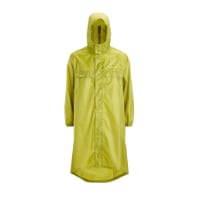Yarma said:
I arrive in SJPDP 16/8/2013. Trying to give myself best chance of completing the adventure, but am finding that I am creating injuries just from the long walking sessions I am doing in preparation.
Should I be this intense ? or just get fit on the Camino?
Really excited to get going and having time of my life, hopefully with all limbs in tack. :wink: :?:
Biggest nightmare is crossing the Pryenees, BRING IT ON !!!!!
Cheers Yarma
Yarma,
Go easy.
Be sure to train while wearing/carrying whatever you plan to take. Tried and true is better than new and never worn/used for all your camino gear. Although training is most important nothing really prepares your body for the daily repeated routine of walking the camino week after week except walking daily with all your kit week after week.
Although I had walked throughout the summer hiking 20 k up the 1060 meter Ibaneta pass via the Valcarlos route the first time in 2004 at 64 to the monastery at Roncevalles was certainly the most physically exhausting day of my adult life then to date. I was pooped! Beneath a deep blue sky and brilliant sun I gasped and ached while my pack felt like bricks. ...But eventually I made it to Santiago walking slowly all the way.
Then I learned the hard way that this is NOT a walk in the park! Just because so many pilgrims have been successful does not guarantee that all will be. Anybody any moment can pull or fall or break anything. The most common injury is the result of trying to walk too far too quickly carrying too much!
Since then I always walk slowly and very easy. Daily distances cited in the guidebooks are not sacred; remember the fable of the tortoise and the hare.
Happy training and Buen Camino,
Margaret Meredith




















